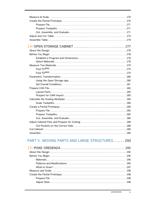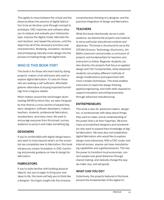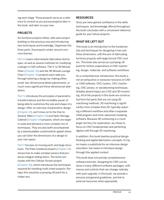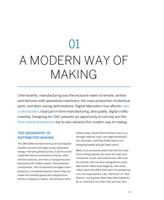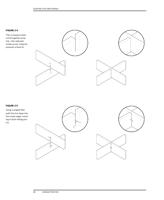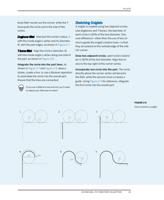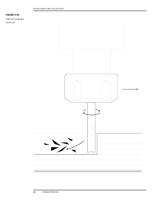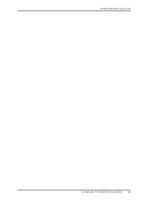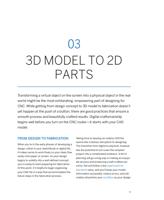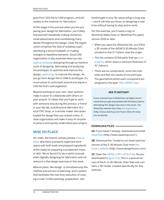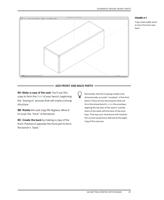
FIGURE 1-2
Ronen Kardushan’s
Italic Shelf
WHY DO CNC PROJECTS LOOK THE WAY THEY DO?
Like most innovations that are invariably differ-
ent from what came before, design that is opti-
mized around this new technology will bear a
“CNC look.” AtFAB’s story explains how its
appearance was not a style, but rather a bal-
ancing act between the requirements of the
machine, material, labor, function, and aesthet-
ics. Its details, joinery, and structures form the
simplicity that characterize AtFAB’s overall
appearance, not the other way around.
Another factor that influences the appearance
of CNC furniture, especially digital designs that
may be shared, is the use of shapes and techni-
ques that simplify the fabrication process. Con-
toured surfaces, many small parts, complicated
shapes, and double-sided parts demand more
machine time for milling, additional coding of
multiple passes, or complex stops and starts
for end mill changes and flip-milling (more on
these concepts in Chapter 6). Reliance on pro-
file cutting ensures that furniture parts require
nothing more than a light sanding as they come
off the machine. Elemental shapes with simple
joinery also facilitate quick, intuitive assembly,
so that machine effort is maximized and man-
ual labor is minimized.
Material and efficiency also factor into a
design’s appearance. AtFAB’s rotationally sym-
metrical structures, like the Cat in Bag Table or
Rotational Stools, nest parts of all sizes onto a
cut sheet, while maintaining a consistent grain
direction and a high material yield. Such mate-
rial efficiency has obvious economic advan-
tages in the manufacturing context, as well as
for personal making, when you can make a din-
ing set from three sheets of plywood. It’s worth
32
DESIGN FOR CNC













